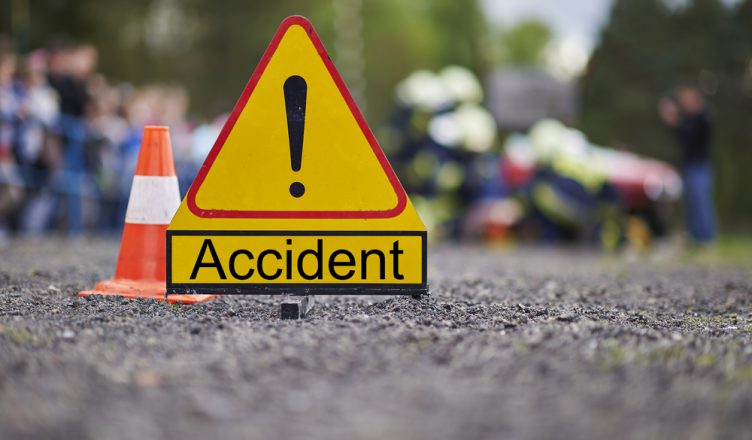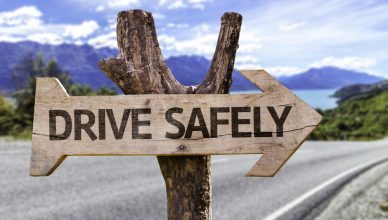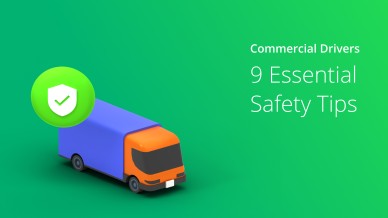Disclaimer: This article is not legal advice and has not been reviewed by a lawyer. These are a collection of suggestions and best practices we’ve compiled from many of our customers. Check with your legal counsel and insurance company for their specific recommendations as it may apply to you or your business.
Even the best company drivers can have bad luck on the road and get into an accident.
Field employees must be prepared to deal with all of the expensive and time-consuming consequences of a collision, such as injuries, medical bills, insurance paperwork, and vehicle repairs.
Everyone on your team should know that they need to follow these ten steps after an accident:
#1 Stay At The Scene
Even if it’s a minor accident, business drivers should not leave the scene until they have spoken with the police, the other driver, or both.
#2 Stay Calm
It can be quite overwhelming to think about the aftermath of an accident, so it’s only natural for company drivers to get nervous.
They need to remain calm. If they behave erratically while they’re still operating their vehicle after an accident, they may cause another accident. Also, they must not get angry when interacting with the other drivers involved in the collision, as this may lead to a physical confrontation.
#3 Seek Medical Assistance
Company drivers should call for medical assistance immediately if anyone involved in the accident is bleeding or has sustained a physical injury. Also, the drivers must wait for medical help to arrive before attempting to move the person or perform emergency aid.
#4 Call The Police
Drivers shouldn’t wait a single minute to call the police. If they can’t contact the police themselves, they should ask someone else to do so. Police officers are trained to address traffic infractions and take notes for the incident record. When dealing with the police, drivers must be patient and follow their instructions.
#5 Prioritize Safety
Ideally, drivers will be able to move their cars off the road after a collision, but some jurisdictions require vehicles to remain in place after an accident occurs.
In this case, drivers should do what they can to prevent traffic from colliding with their vehicles. They need to turn on their emergency lights and place warning triangles or cones around their vehicle so that approaching traffic knows what’s going on.
Once police officers have indicated that it’s fine to move the vehicles, the company driver should move the vehicle safely to the side of the road and out of the way of oncoming traffic.
Want To See For Yourself How Route4Me Can Boost Your Profits?

#6 Don’t Admit Fault
For insurance purposes, drivers should only discuss the specifics of their accident with police. Without being impolite, drivers should never admit fault to either the police officer or the other driver, even if their actions caused the crash.
#7 Contact The Employer
After the accident, business drivers should immediately contact their manager and, if applicable, their insurance company as well. If it’s required by their policy, the driver should also file a state vehicle accident report. Obtaining the police report will accelerate the claims process for auto insurance.
#8 Document The Accident
Drivers should take photographs that show the context of the accident. Pictures should be taken of any relevant traffic lights, road signs, or road conditions.
They should also record the details of the accident in writing, such as:
- Date, time, and location of the accident
- Names, contact information, license plate numbers, and car insurance information for everyone involved in the accident
- Names and contact information of anyone who witnessed the accident
- Names and badge numbers of police officers who responded to the accident and instructions for obtaining a copy of the police report
#9 Prepare In Advance
Each driver should have these items in their vehicle before they start driving:
- Vehicle registration
- Car insurance company ID card
- First aid kit
- Basic tool kit
- Paper and pen
- Flashlight with fully charged batteries
- Duct tape
- Warning triangles
- Fire extinguisher
- Disposable camera
- Brightly colored cloth to tie to driver-side door
- 24-hour first point-of-contact list from employer
#10 Find The Root Cause
To ensure that an accident doesn’t happen again, business managers and owners need to find out why the accident happened in the first place. Managers should also share safe driving tips with their drivers.
They need to embrace advanced technology solutions like route optimization software as well. Such software comes with many powerful features that help prevent accidents, including:
Route Optimization
A daily route planner with route optimization allows managers to plan accurate and efficient routes in 30 seconds or less. It considers traffic, weather, construction, and other obstacles that can delay your drivers. When you give your company drivers better routes, they won’t need to speed up in order to compensate for delays, which makes them safer on the road.
GPS Tracking
Of course, optimized routes won’t make your drivers safer if they don’t actually follow the routes you give them.
That’s why business managers need GPS tracking software. It shows you the location and speed of your drivers in real-time. You can always make sure they’re following your instructions and driving defensively.
Also, insurance companies know that GPS tracking makes it less likely that you’ll need to file an insurance claim, so they often offer reduced premiums to companies that use this technology.
For more information, check out our article on how GPS tracking can help reduce insurance costs.
Speed Alerts
The best delivery route optimization software also comes with a speed alert feature that notifies managers whenever one of their drivers goes over the speed limit. That way, you don’t need to go digging through tracking data to find this useful information.
Finally, answering these three questions correctly will confirm that you know what company drivers should do after an accident:
- What photos should company drivers take after an accident?
- How does route optimization software improve driver safety?
- How can company drivers prepare themselves for unexpected accidents in advance?
Want To See For Yourself How Route4Me Can Boost Your Profits?







